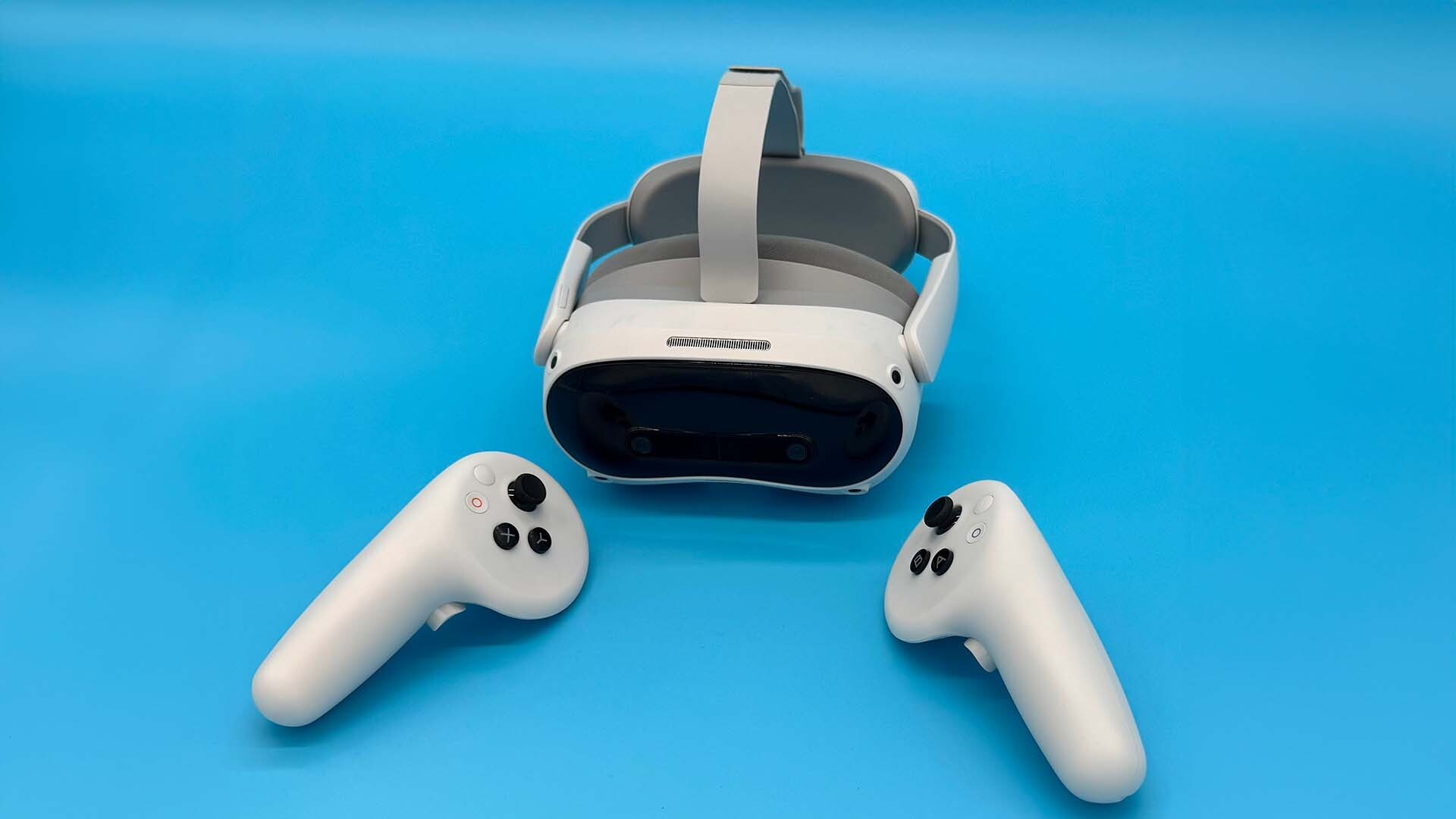Our Verdict
The Pico 4 Ultra offers a reasonable alternative to Meta's best if you haven't committed yet, but not a reason to ditch it if you have.
For
- Super intuitive
- Great quality-to-price ratio
- Nice display
- Genuine competition for the current VR king
Against
- Beaten out by Meta's software offerings
- Light leakage and just okay tracking
- Not very unique
- Not available in the US
PC Gamer's got your back
Let's address the Meta-shaped elephant in the room, The Pico 4 Ultra feels intentionally designed to combat the Meta Quest 3, which is currently the best VR headset right now. If you're looking for a reason to try out another headset or think a RAM boost or different headset fit will suit you better, the Pico 4 Ultra actually does a very good job at giving an alternative—provided you're in the UK and EU. For now, it's not available in the US.
At £529 for the 256 GB model, which is the only version you can currently buy, it's a little more expensive than the cheapest Quest 3, and a little less pricey than the highest-specced Quest 3. This places it pretty much in the same market and makes it a decent competitor out of the box. Both headsets came with a free game, with the former currently getting Blade and Sorcery: Nomad until February 2025, and the latter getting Asgard's Wrath 2 back when it was released.
Out of the box, the Pico 4 Ultra is a super smooth experience with the controllers feeling natural in the hands, and the glasses spacer snapping into place intuitively. This makes it incredibly easy to just pop it on, use the headset with glasses, and take it off again once you are done. I thought the relative speed at which I could put on that bracer might cause it to slip out during play but it never did. There's a Lego-esque effect to this that works well.
It does, unfortunately, lead to a small amount of light leakage—where the headset doesn't entirely wrap around your face—but this is an unfortunate expectation for glasses users. As well as this, with glasses on, it results in that dreaded pressure on the bridge of the nose. Once again, this doesn't seem hugely avoidable for VR headsets, but Pico isn't fixing a longstanding problem here and won't be the headset that changes your mind on VR.
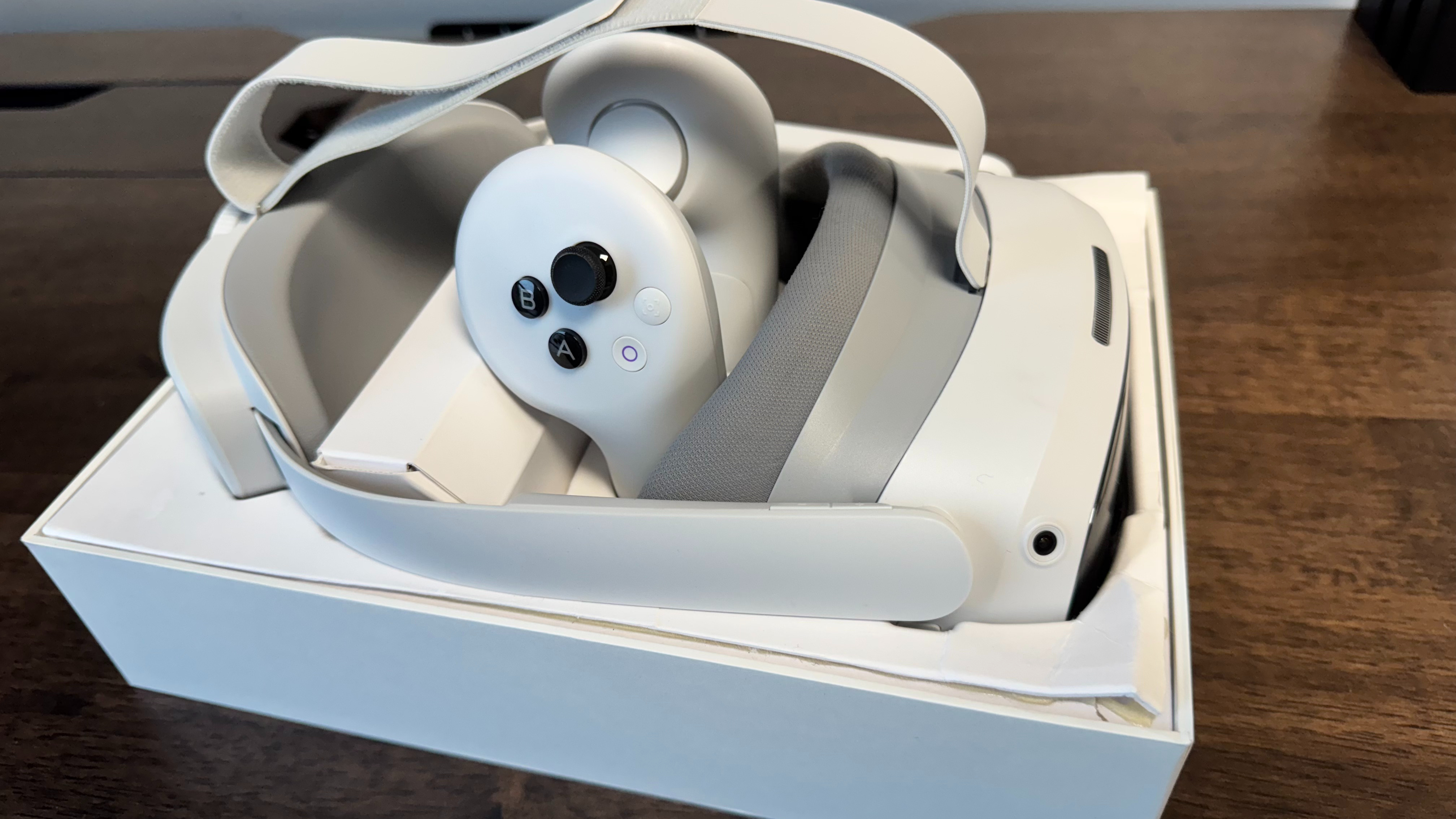
Tracking: Inside-out tracking
Lens tech: Pancake lenses
Resolution: 2160×2160, 1200 PPI
Refresh Rate: 90 Hz
FOV: 105°
RAM: 12 GB LPDDR5
Storage: 256 GB
Chip: Snapdragon XR2 Gen 2
IPD: 58-72
Audio: Dual stereo speakers
Weight: 580 g
Price: £529/€599
However, if you've tried VR and understand its limitations, this is a super solid headset. As far as comfort is concerned, I find it stands somewhere between the passable fit of Meta's offering and the premium comfort of Sony's PSVR2. Despite being heavier than Meta's latest headset, it balances better on my admittedly rather large head.
The strap itself moves up and down, with a wheel at the back to tighten it, and a velcro top strap to position the headset. Though I'd occasionally catch my hair in this, the headset never took my glasses with it as I took it off—a rare occurrence for VR.
As far as its aesthetic is concerned, the Pico 4 Ultra looks almost identical to its predecessor, the Pico 4, with a white and grey aesthetic—allowing the black of the headset face to serve as its central most noticeable part. This is a simple aesthetic reminiscent of almost all of the best VR headsets out there right now.
The Snapdragon XR2 Gen 2 powering this headset is the same found in the Meta Quest 3 and upcoming Meta Quest 3S and is more than powerful enough for the games you can throw at it. Unfortunately, Pico is much more limited than Meta in its on-device offerings. If you are looking for a good standalone headset, the upgraded 12 GB of RAM and sizeable storage make it an attractive package, though it just can't stand up to Meta's digital marketplace.
If you want to use it in PCVR, you simply need to get the Pico Connect app on your PC, open the same app on your headset, and connect. This can be done via Wifi, which is helped by the headset's built-in Wifi 7 chip, or via USB-C, which can be found just below the strap on the left-hand side of the headset. Though USB 3.0 is recommended, USB 2.0 at just shy of 500 Mbps is surprisingly stable too.
Where the Meta Quest Link app on PC tries to shoo you away from Steam VR like Microsoft Edge on a fresh Windows install, Pico Connect knows you're there for Steam VR and avoids forcing you to jump through hoops to boot it up. Though this doesn't save more than half a minute each time, it's still a welcome addition that makes the headset feel like a more natural fit for a PC user.
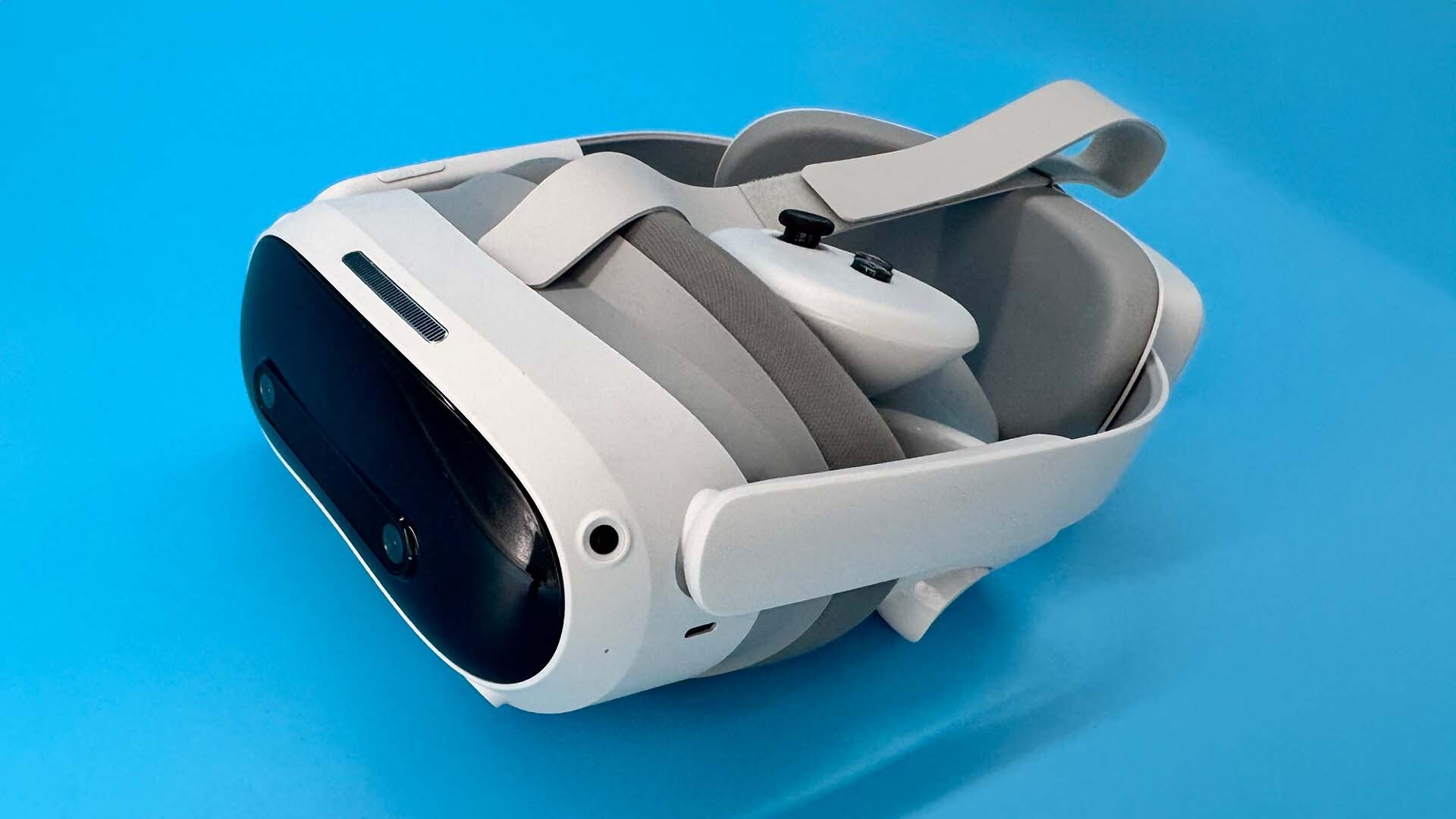
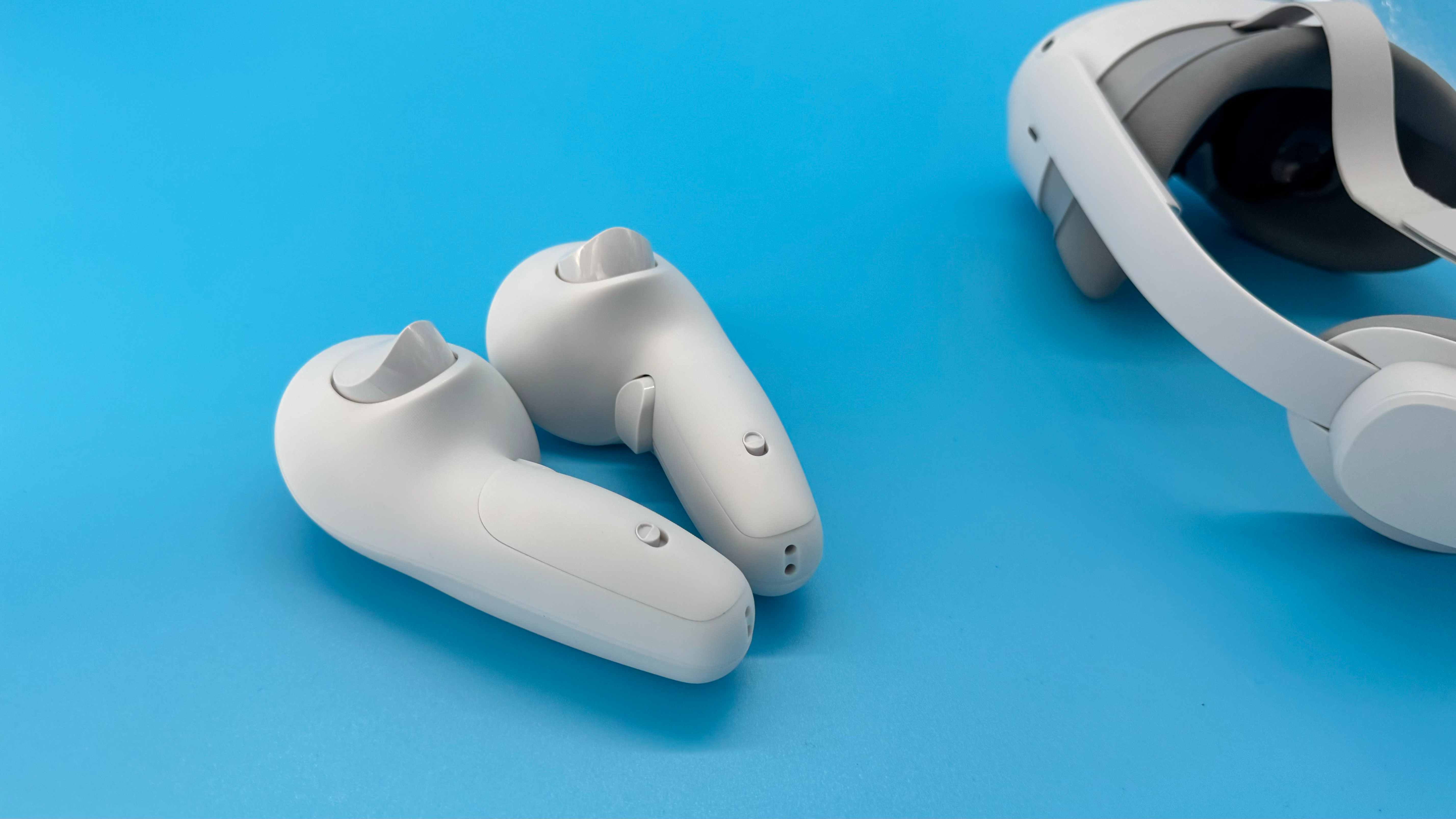
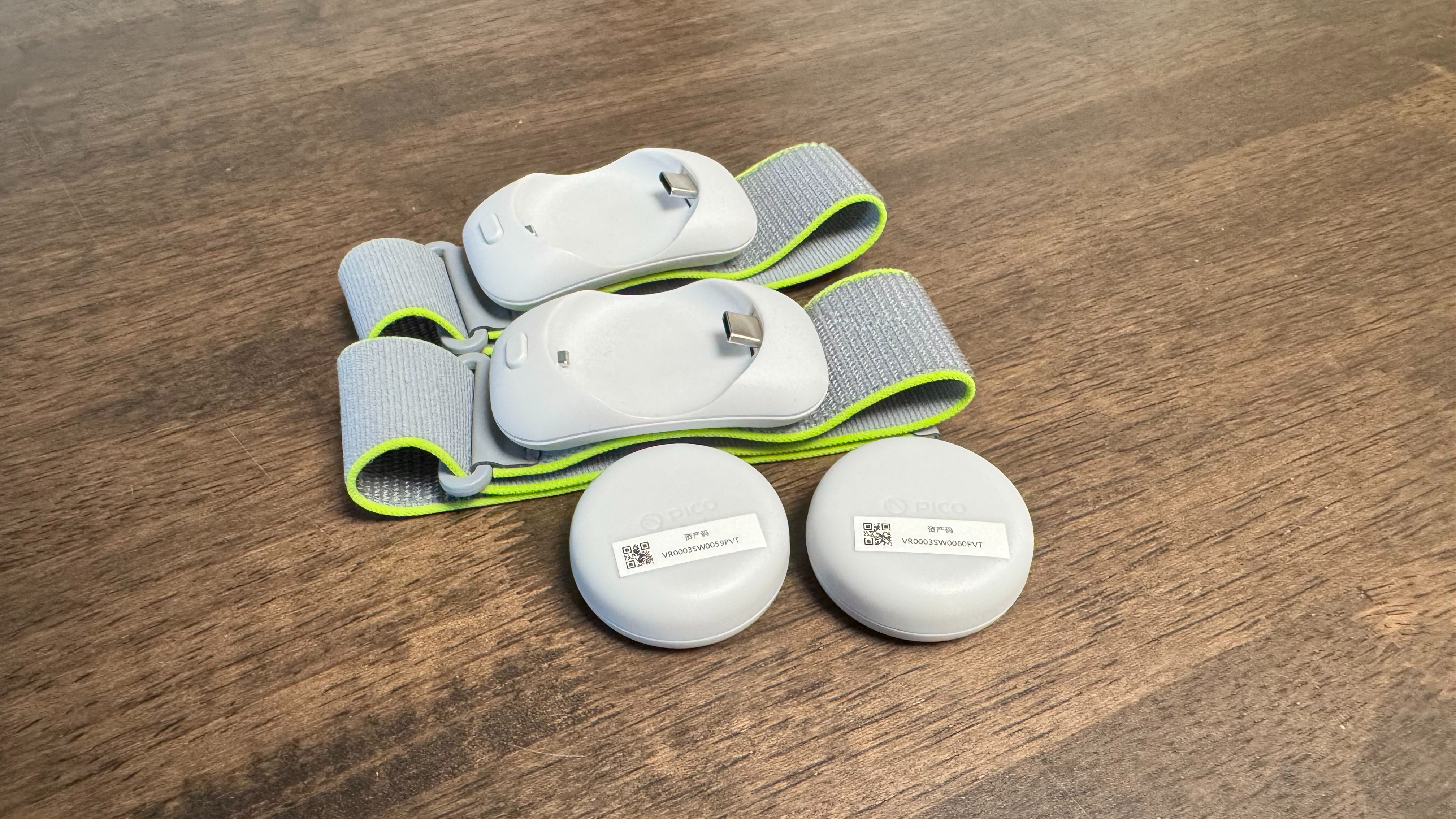
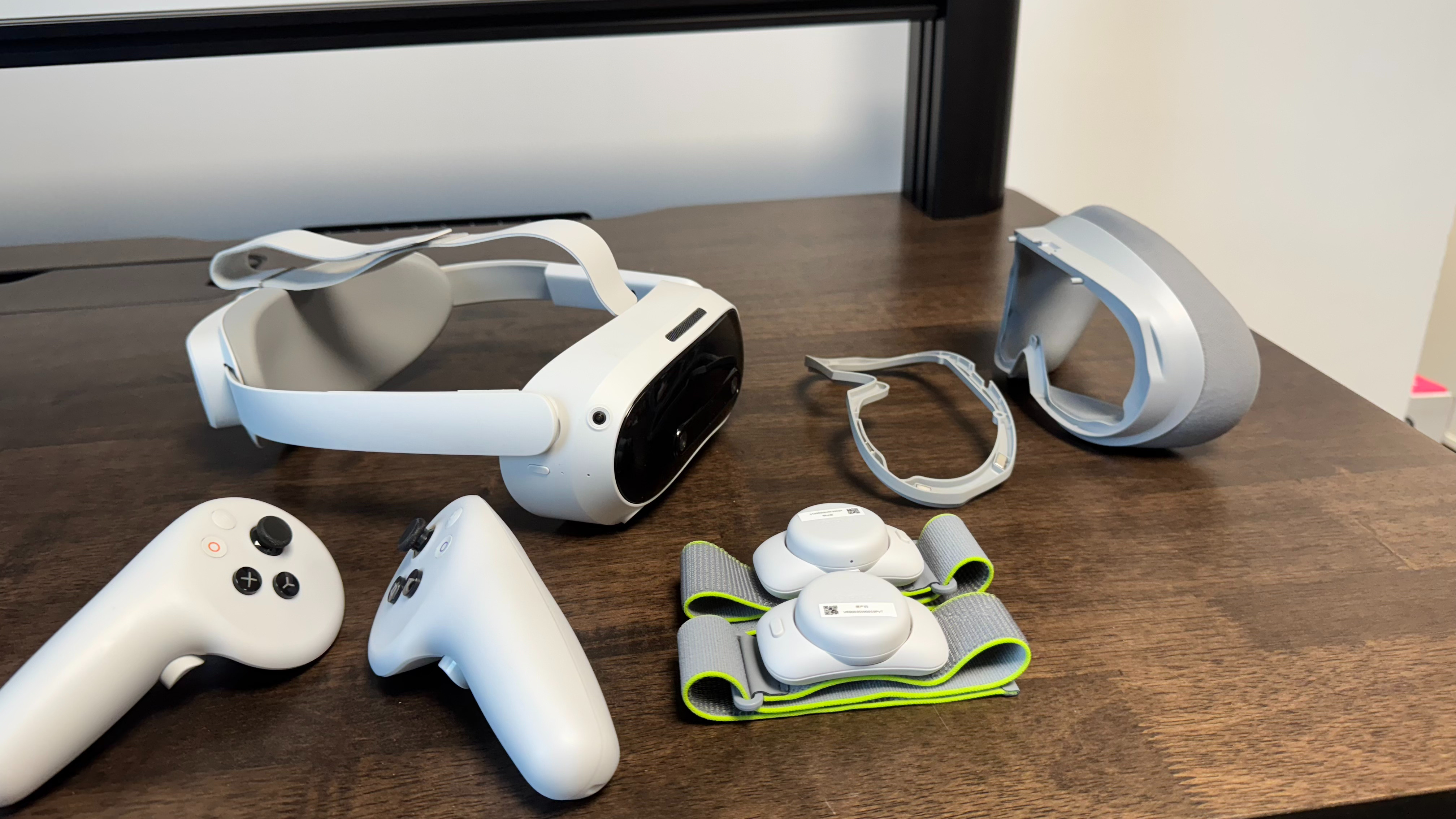
Though the speaker in the helmet is decent, and volume controls built into the strap are quite good, this headset noticeably lacks a 3.5 mm jack, which means you can't plug your own set in. As well as this, tracking—in both Steam VR and native games—was mostly good, not great. Down at my side (or close to my legs) some controller tracking wouldn't be quite as precise, which can make reloading in the likes of Boneworks a tad inconsistent.
My time spent with Half-Life: Alyx, where inventory is managed overhead and from your arm, was near pristine, and made me want to restart perhaps the best VR game out there one more time. This very minor inconsistency with tracking was made even more peculiar given how great the Pico 4 Ultra's leg tracking is.
When preordered just before launch, or for an extra £80 right now, you get two Pico Motion Trackers, which can give you legs in games like VR Chat and Dance Dash. They're honestly a great bit of tech, and it adds far more than I was expecting to the act of moving in VR.
The ring surrounding the controllers of the Pico 4 is gone this time around, though the controller itself is strikingly similar. Each comes with four face buttons, a small thumbstick at the front, and two buttons on the back. The ABXY buttons come in a glossy black, where the two extra buttons aligned on each side are slightly more indented in the controller. This makes it very easy to find the most important parts when you can't see your hands.
✅You don't want to buy from Meta
This is a reasonable competitor to Meta's best, offering the same basic chip, better RAM, and a great screen. If you've had your cursor over the button to buy a Quest but haven't yet, this is a good alternative.
✅You want a smooth PCVR software experience
Without having to go through the Meta Link service, with its marketplace and alternate home system, Pico's connection software is super smooth.
❌You're looking for lots of standalone content
Pico's marketplace isn't bad but it's not quite as varied and broad as its competitors. As a standalone headset, this can leave you feeling left out of the VR conversation.
❌You already own a headset
The Pico 4 Ultra isn't particularly unique and doesn't hugely improve on any of its competition. You aren't missing out by not having it, even if it's quite a good headset.
The controllers themselves have textured grips, much like those found at the bottom of the Xbox Core controller and this, combined with a strap at the bottom, makes them sit comfortably and firmly in the hand. There's nothing major to write home here but that's a good thing, as the controllers perform their job without any gimmicks.
At 2160 pixels per eye, the Pico 4 Ultra's screen is gorgeous and super easy to use. Passthrough play is also noticeably the best I've used in a mid-range headset, though it is still not crisp. It's just enough to check a notification on my phone while I play and immersive enough to get me to hold up my watch when it pings, assuming I'd see it whilst in the cosy shack of A Fisherman's Tale.
You can even capture and watch spatial videos on the headset, which is a bit of a gimmick but an interesting feat nonetheless.
If you're a PC gamer like me, the headset's chip, much of its specs, and even possibly its passthrough, may not be that important for your everyday use. Luckily, the headset is comfortable and intuitive, and the controllers are super solid.
Unfortunately, it just barely places above the Meta Quest 3 in a handful of areas and, being a year younger, it's less prone to see sales anytime soon. It makes for good competition but it won't beat out the Quest 3 with it seeing tonnes of sales, and it's hard to imagine it won't get swept under the rug quickly by the Quest 3S when it launches at nearly half its price.
The Pico 4 Ultra's specs are pretty much exactly what you'd expect from a headset of its calibre and price point. The main reason I could see someone picking the 4 Ultra is because they want to avoid Meta but I don't know if Bytedance as a company is any better.
Fundamentally, Pico isn't offering a unique concept here and that will make it hard to place over the current top dog, even if it makes a compelling argument for it.
The Pico 4 Ultra offers a reasonable alternative to Meta's best if you haven't committed yet, but not a reason to ditch it if you have.

James is a more recent PC gaming convert, often admiring graphics cards, cases, and motherboards from afar. It was not until 2019, after just finishing a degree in law and media, that they decided to throw out the last few years of education, build their PC, and start writing about gaming instead. In that time, he has covered the latest doodads, contraptions, and gismos, and loved every second of it. Hey, it’s better than writing case briefs.
